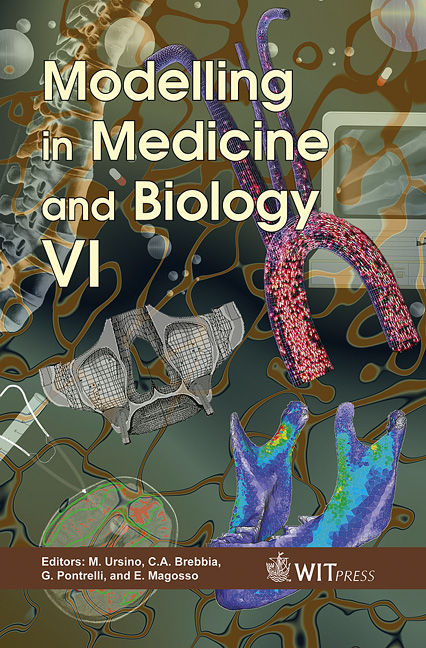A Model Of Power Spectral Density In Cortical EEG, For The Study Of Cortical Connectivity
Price
Free (open access)
Transaction
Volume
8
Pages
10
Published
2005
Size
496 kb
Paper DOI
10.2495/BIO050201
Copyright
WIT Press
Author(s)
M. Zavaglia, E. Magosso, L. Astolfi, F. Babiloni & M. Ursino
Abstract
Neural mass models have been used for many years to study the dynamics of neural groups, or of entire cortical areas, in a simple and computationally inexpensive way. In this paper, we modified a model proposed by Wendling et al. [6] to analyze EEG power density in some cortical areas during a simple task (finger movement). The work consists of three subsequent stages: 1) in the first we performed a sensitivity analysis of the main model parameters (i.e., strength of inhibitory and excitatory synapses and their time constants) and evaluated their role in affecting power spectral density (PSD). This analysis confirmed the possibility to simulate various EEG rhythms by modifying just the strength and time constants of a few synapses. However, a single neural mass model produces a narrow frequency band, which cannot mimic the overall complexity of EEG in an entire cortical area. 2) Hence, in the second stage we built a model of a region of interest (ROI) by combining three neural mass models arranged in parallel. With this model, and using an automatic fitting procedure to establish parameter values, we carefully reproduced the PSD of cortical EEG in six ROIs during finger movement. Cortical EEGs were computed with an inverse propagation model, starting from measurement performed with 128 electrodes on the scalp. 3) In the third stage, we simulated how PSD in some ROIs can be modified, as a consequence of some hypothetical functional connectivity among the regions. Results show that the proposed model is able to mimic PSD of cortical activity acting on a few parameters only. The pattern of power spectra, however, is significantly modified by a functional connectivity among the ROIs. Knowledge obtained from the model may be exploited to derive information on functional connectivity, starting from non-invasive EEG measurements. Keywords: neural models, brain connectivity, intracerebral EEG.
Keywords
neural models, brain connectivity, intracerebral EEG.





